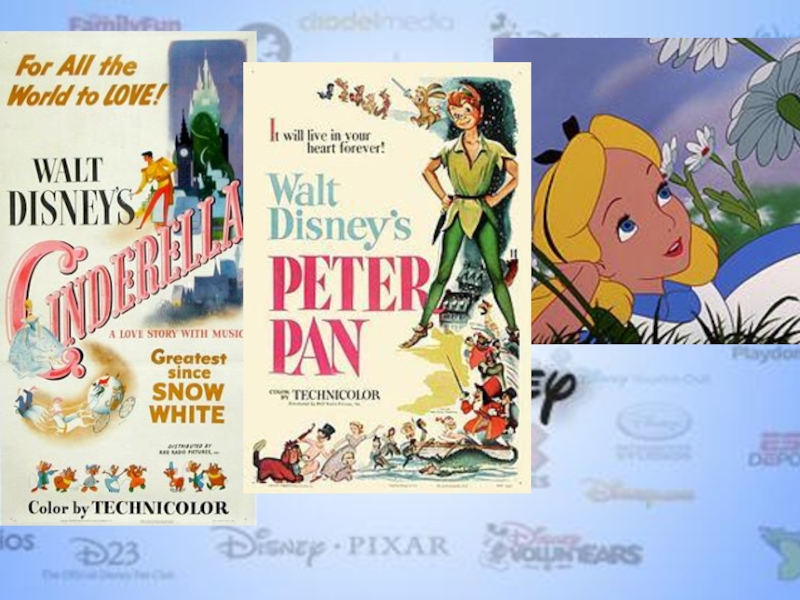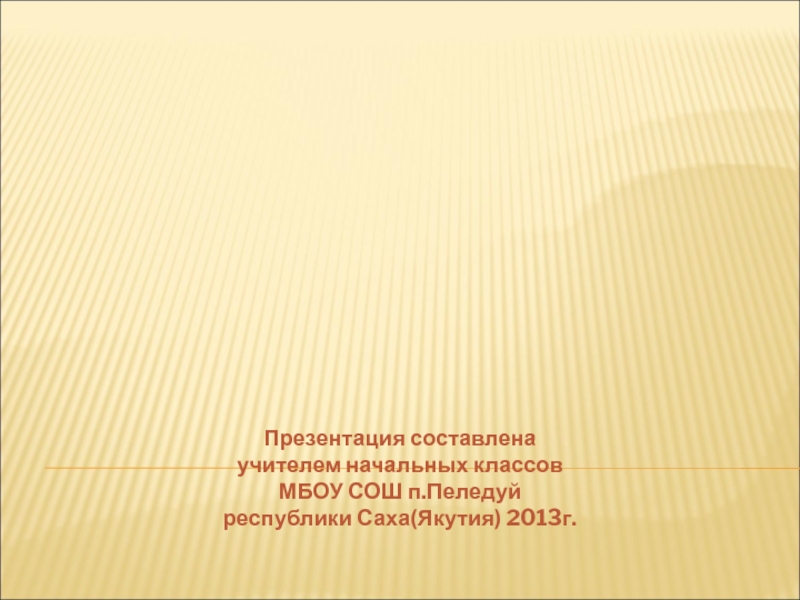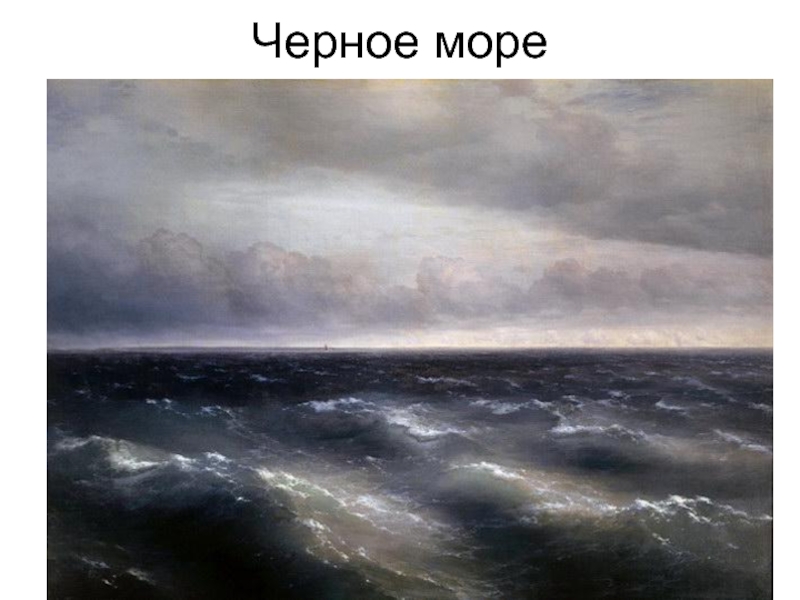- Главная
- Разное
- Дизайн
- Бизнес и предпринимательство
- Аналитика
- Образование
- Развлечения
- Красота и здоровье
- Финансы
- Государство
- Путешествия
- Спорт
- Недвижимость
- Армия
- Графика
- Культурология
- Еда и кулинария
- Лингвистика
- Английский язык
- Астрономия
- Алгебра
- Биология
- География
- Детские презентации
- Информатика
- История
- Литература
- Маркетинг
- Математика
- Медицина
- Менеджмент
- Музыка
- МХК
- Немецкий язык
- ОБЖ
- Обществознание
- Окружающий мир
- Педагогика
- Русский язык
- Технология
- Физика
- Философия
- Химия
- Шаблоны, картинки для презентаций
- Экология
- Экономика
- Юриспруденция
The Walt Disney Company презентация
Содержание
- 2. The Walt Disney Company, commonly known
- 3. Walt Disney
- 4. In addition, Disney has since created
- 5. In early 1923, Kansas City, Missouri,
- 6. The first cartoon of Disney Brothers Cartoon Studio
- 7. Deciding to push the boundaries of
- 8. Taking three years to complete, Snow
- 9. The studio continued releasing animated shorts
- 11. With limited staff and little operating
- 13. The release of Cinderella in 1950
- 15. Some of Disney's animated family films
Слайд 2
The Walt Disney Company, commonly known as Disney or The Mouse
House, is an American diversified multinational mass media and entertainment conglomerate headquartered at the Walt Disney Studios in Burbank, California. It is the world's second largest media conglomerate in terms of revenue, after Comcast. Disney was founded on October 16, 1923, by Walt Disney and Roy O. Disney as the Disney Brothers Cartoon Studio, and established itself as a leader in the American animation industry before diversifying into live-action film production, television, and theme parks. The company also operated under the names The Walt Disney Studio, then Walt Disney Productions. Taking on its current name in 1986, it expanded its existing operations and also started divisions focused upon theater, radio, music, publishing, and online media.
Слайд 4
In addition, Disney has since created corporate divisions in order to
market more mature content than is typically associated with its flagship family-oriented brands. The company is best known for the products of its film studio, The Walt Disney Studios, which is today one of the largest and best-known studios in American cinema.
Слайд 5
In early 1923, Kansas City, Missouri, animator Walt Disney created a
short film entitled Alice's Wonderland, which featured child actress Virginia Davis interacting with animated characters. After the bankruptcy in 1923 of his previous firm, Laugh-O-Gram Films, Disney moved to Hollywood to join his brother, Roy O. Disney. Film distributor Margaret J. Winkler of M.J. Winkler Productions contacted Disney with plans to distribute a whole series of Alice Comedies purchased for $1,500 per reel with Disney as a production partner. Walt and Roy Disney formed Disney Brothers Cartoon Studio that same year. More animated films followed after Alice. In January 1926, with the completion of the Disney studio on Hyperion Street, the Disney Brothers Studio's name was changed to the Walt Disney Studio.
Слайд 7
Deciding to push the boundaries of animation even further, Disney began
production of his first feature-length animated film
Слайд 8
Taking three years to complete, Snow White and the Seven Dwarfs,
premiered in December 1937 and became highest-grossing film of that time by 1939. Snow White was released through RKO Radio Pictures, which had assumed distribution of Disney's product in July 1937, after United Artists attempted to attain future television rights to the Disney shorts.
Слайд 9
The studio continued releasing animated shorts and features, such as Pinocchio
(1940), Fantasia (1940), Dumbo (1941), and Bambi (1942). After World War II began, box-office profits declined. When the United States entered the war after the attack on Pearl Harbor, many of Disney's animators were drafted into the armed forces. The U.S. and Canadian governments commissioned the studio to produce training and propaganda films.
Слайд 11
With limited staff and little operating capital during and after the
war, Disney's feature films during much of the 1940s were "package films," or collections of shorts, such as The Three Caballeros (1944) and Melody Time (1948), which performed poorly at the box-office. At the same time, the studio began producing live-action films and documentaries. Song of the South (1946) and So Dear to My Heart (1948) featured animated segments, while the True-Life Adventures series, which included such films as Seal Island (1948) and The Vanishing Prairie (1954), were also popular. Eight of the films in the series won Academy Awards.
Слайд 13
The release of Cinderella in 1950 proved that feature-length animation could
still succeed in the marketplace. Other releases of the period included Alice in Wonderland (1951) and Peter Pan (1953), both in production before the war began, and Disney's first all-live action feature, Treasure Island (1950). Other early all-live-action Disney films included The Story of Robin Hood and His Merrie Men (1952), The Sword and the Rose (1953), and 20,000 Leagues Under the Sea (1954). Disney ended its distribution contract with RKO in 1953, forming its own distribution arm, Buena Vista Distribution.
Слайд 15
Some of Disney's animated family films have drawn fire for being
accused of having sexual references hidden in them, among them The Little Mermaid (1989), Aladdin (1992), and The Lion King (1994). Instances of sexual material hidden in some versions of The Rescuers (1977) and Who Framed Roger Rabbit (1988) resulted in recalls and modifications of the films to remove such content.
Some religious welfare groups, such as the Catholic League, have opposed films including Priest (1994) and Dogma (1999). A book called Growing Up Gay, published by Disney-owned Hyperion and similar publications, as well as the company's extension of benefits to same-sex domestic partners, spurred boycotts of Disney and its advertisers by the Catholic League, the Assemblies of God USA, the American Family Association, and other conservative groups. The boycotts were discontinued by most of these organizations by 2005. In addition to these social controversies, the company has been accused of human rights violations regarding the working conditions in factories that produce their merchandise.
Some religious welfare groups, such as the Catholic League, have opposed films including Priest (1994) and Dogma (1999). A book called Growing Up Gay, published by Disney-owned Hyperion and similar publications, as well as the company's extension of benefits to same-sex domestic partners, spurred boycotts of Disney and its advertisers by the Catholic League, the Assemblies of God USA, the American Family Association, and other conservative groups. The boycotts were discontinued by most of these organizations by 2005. In addition to these social controversies, the company has been accused of human rights violations regarding the working conditions in factories that produce their merchandise.





















